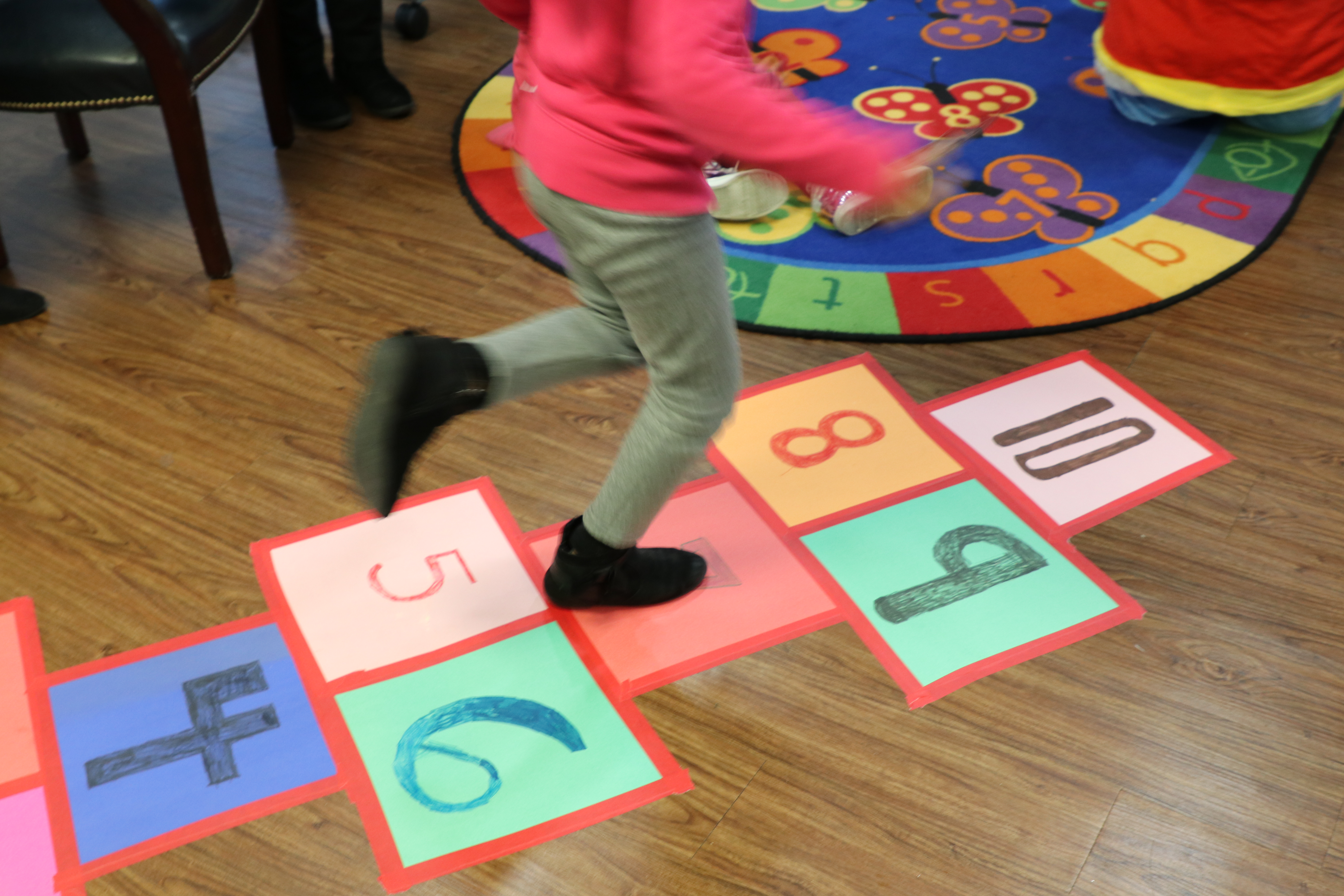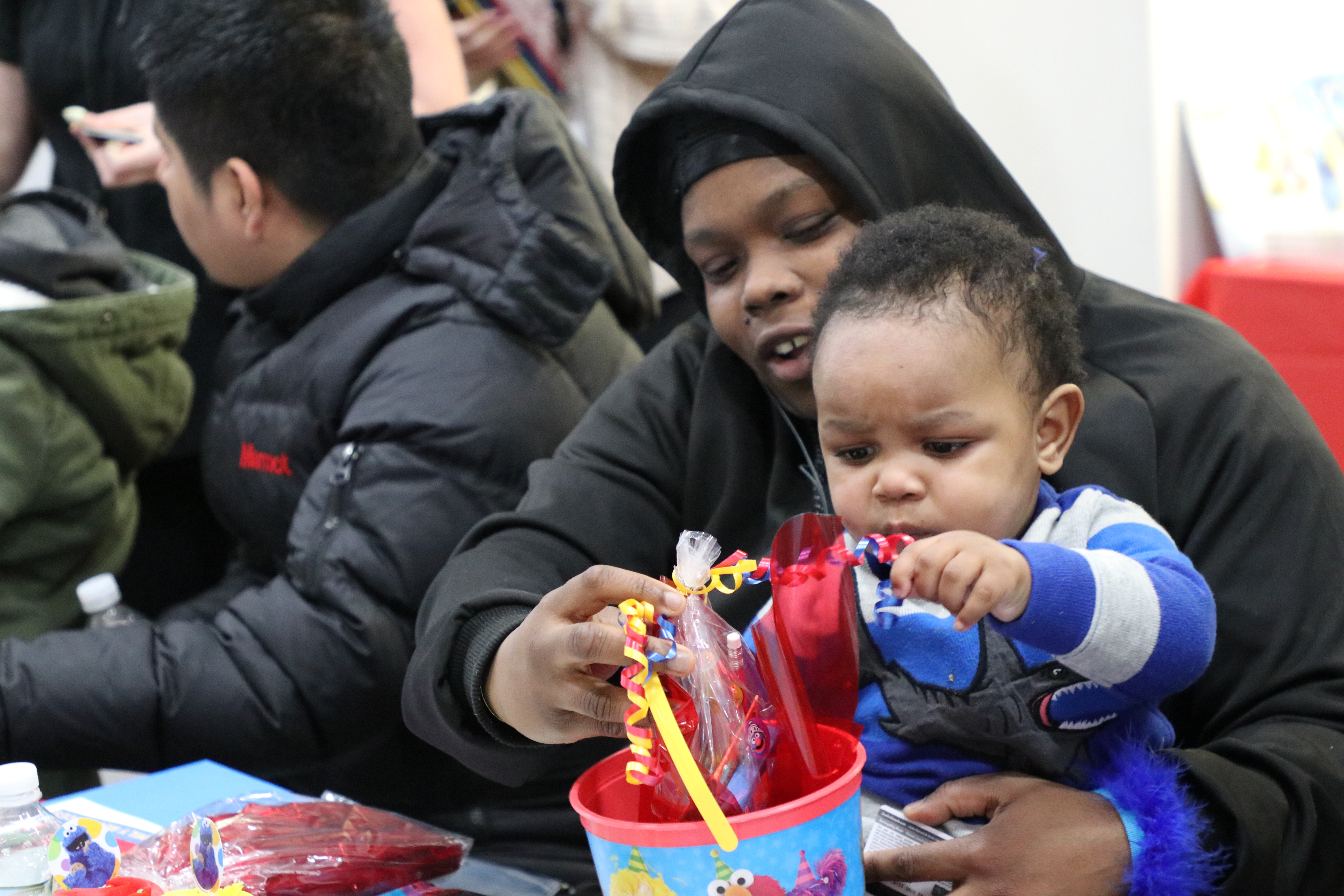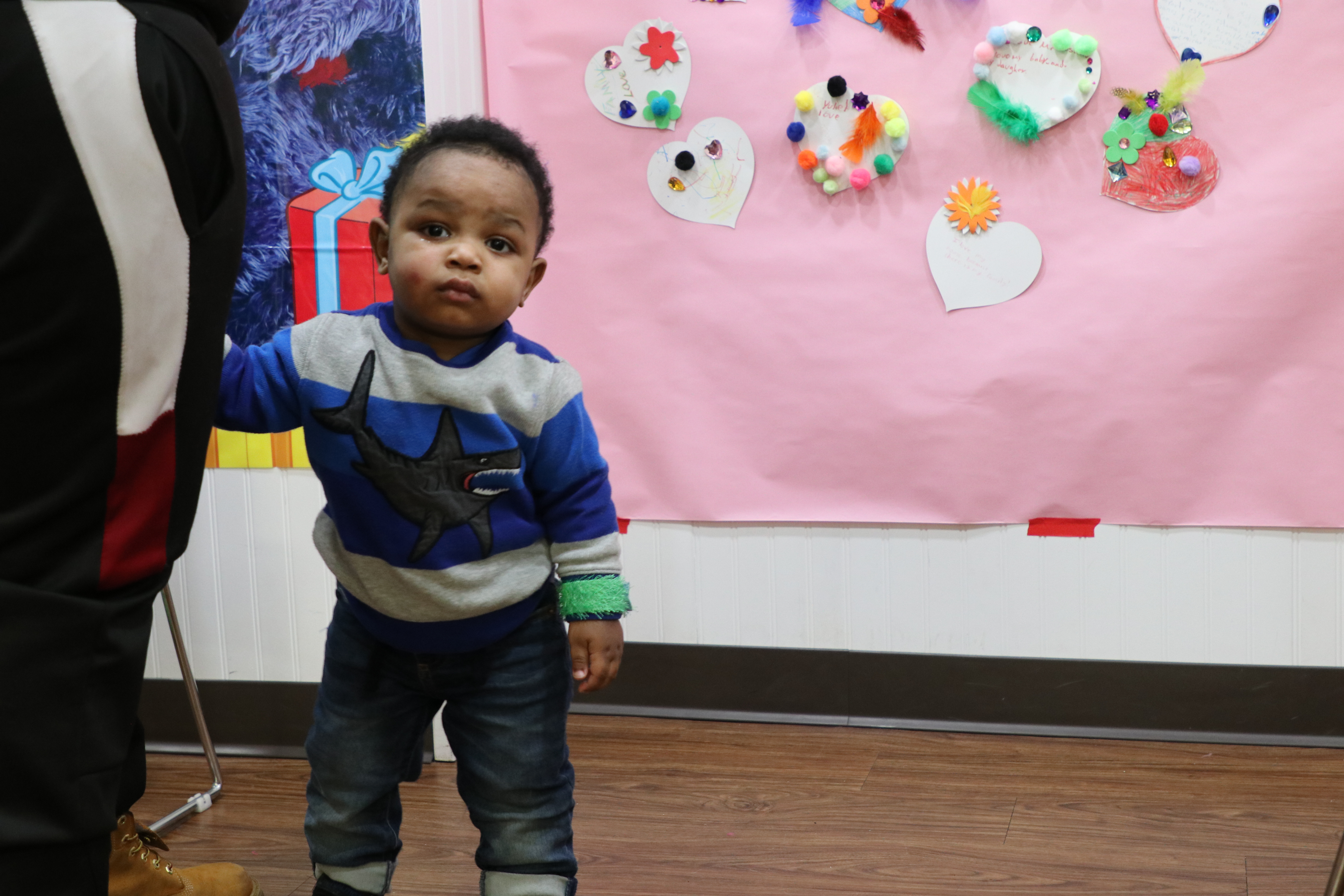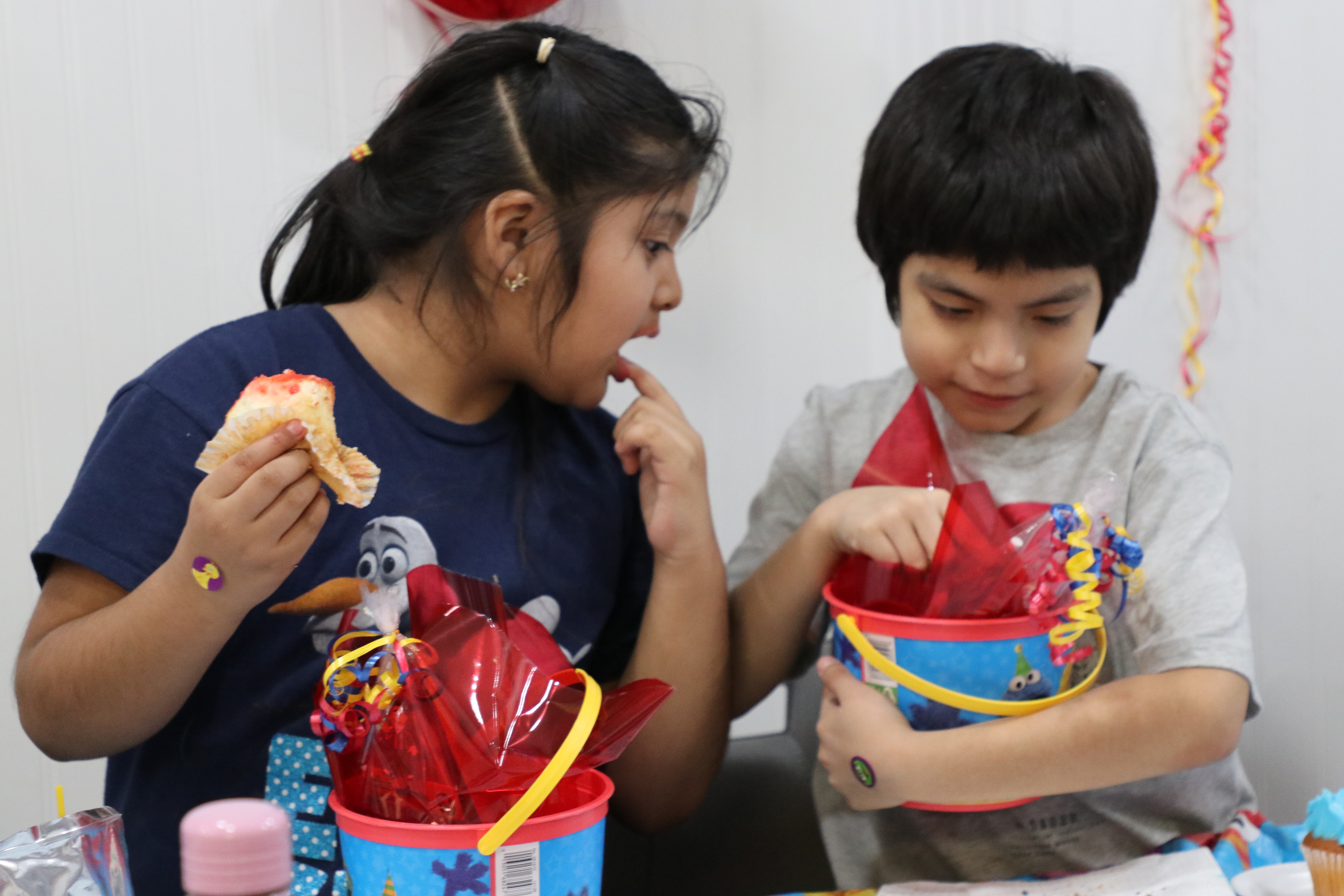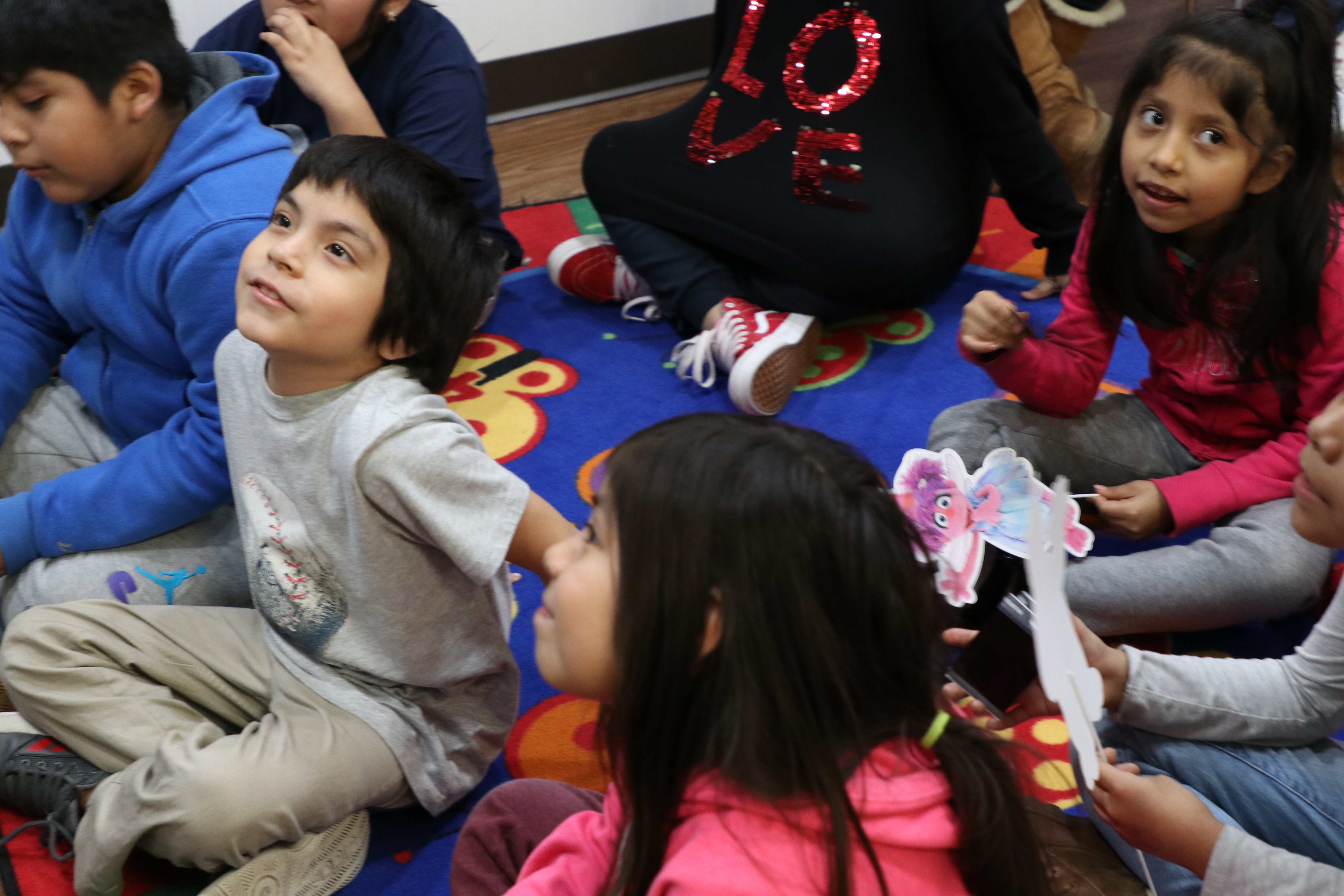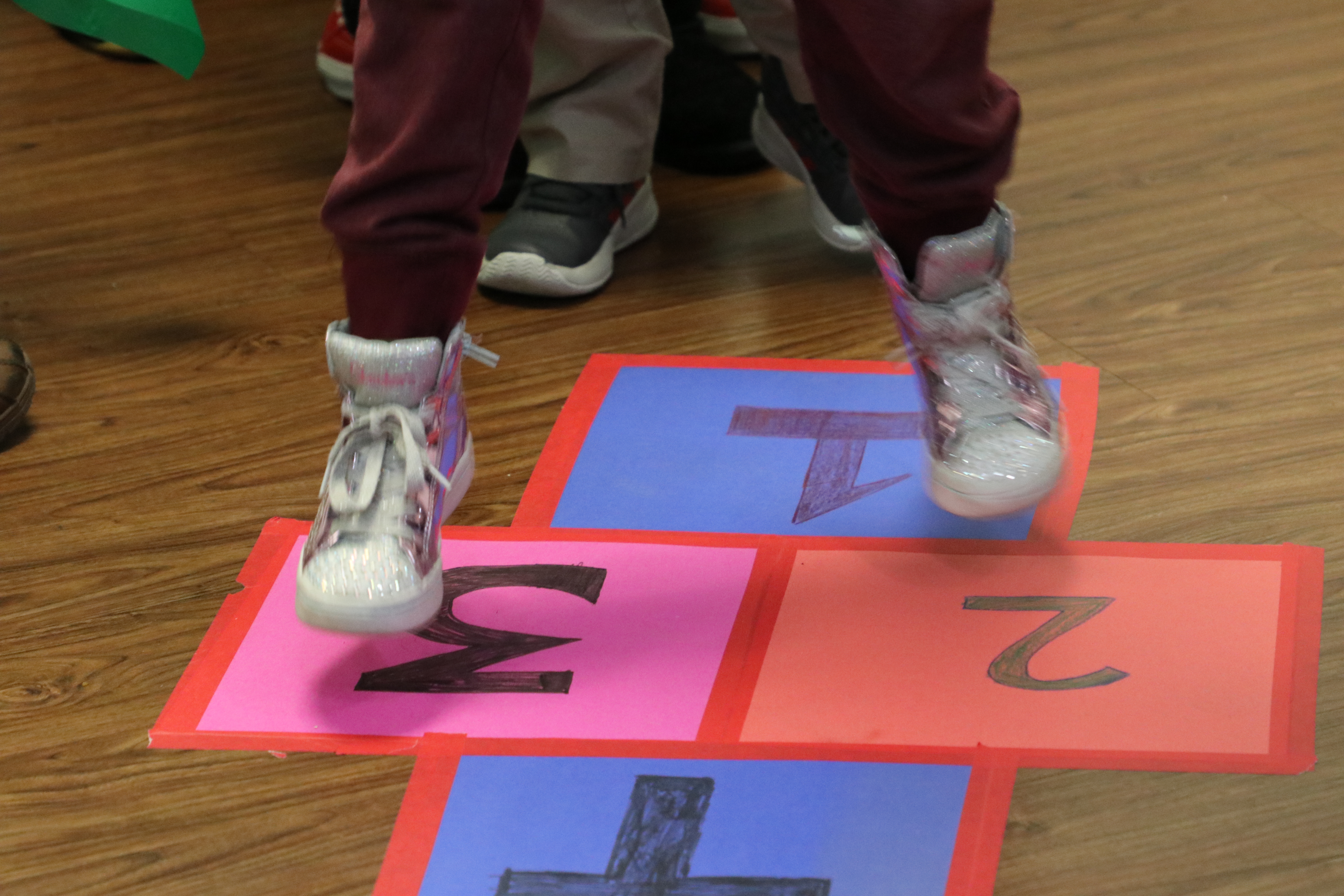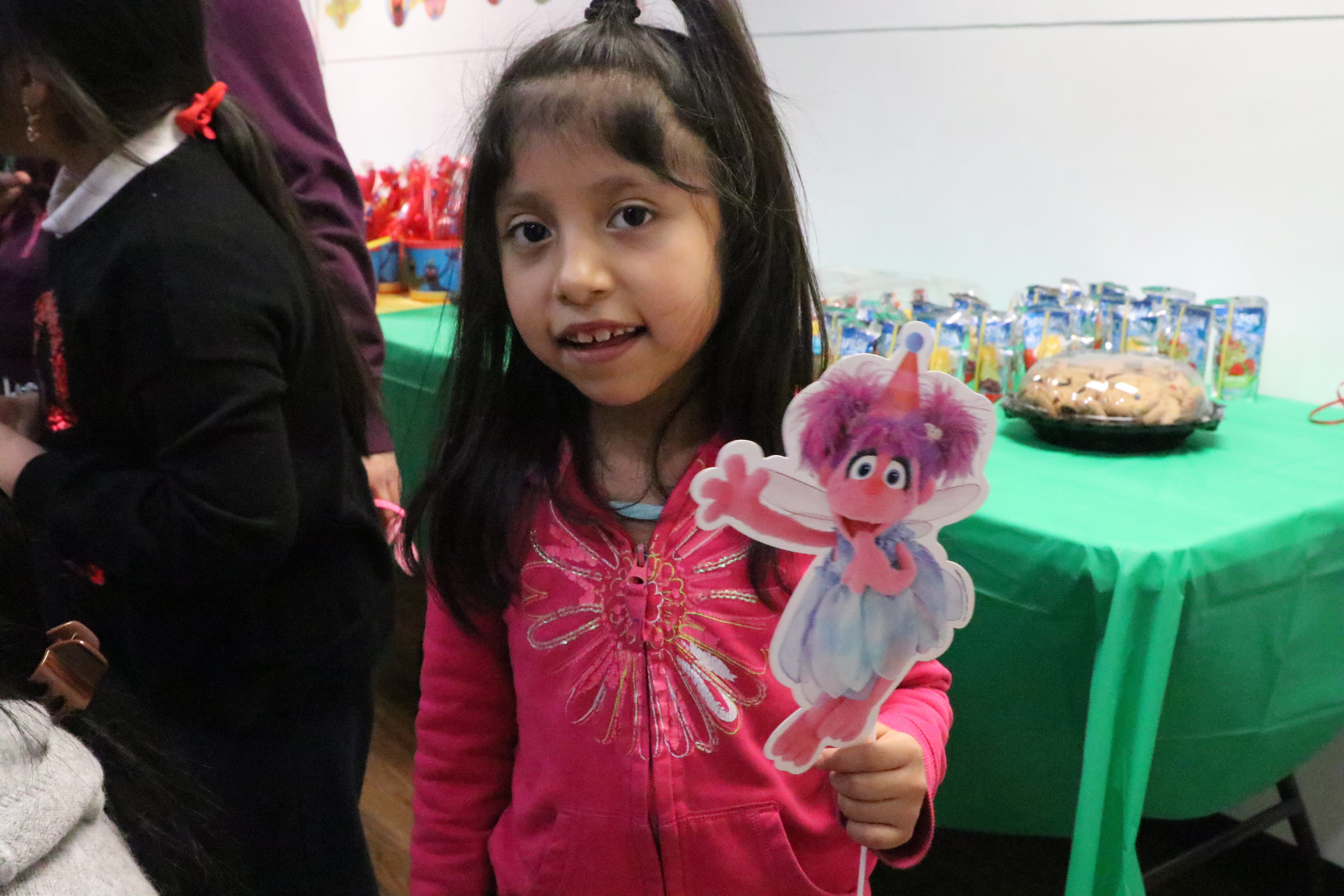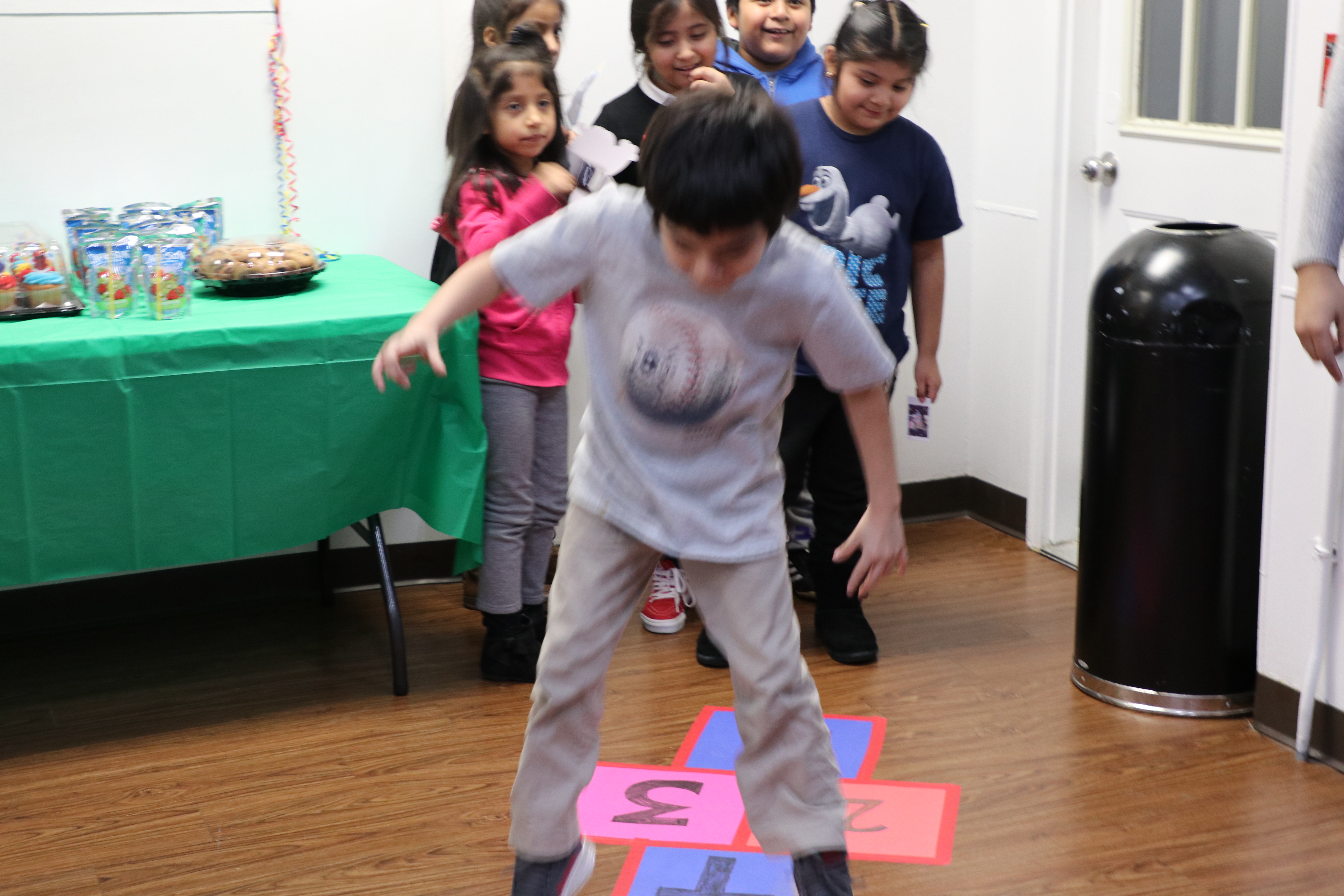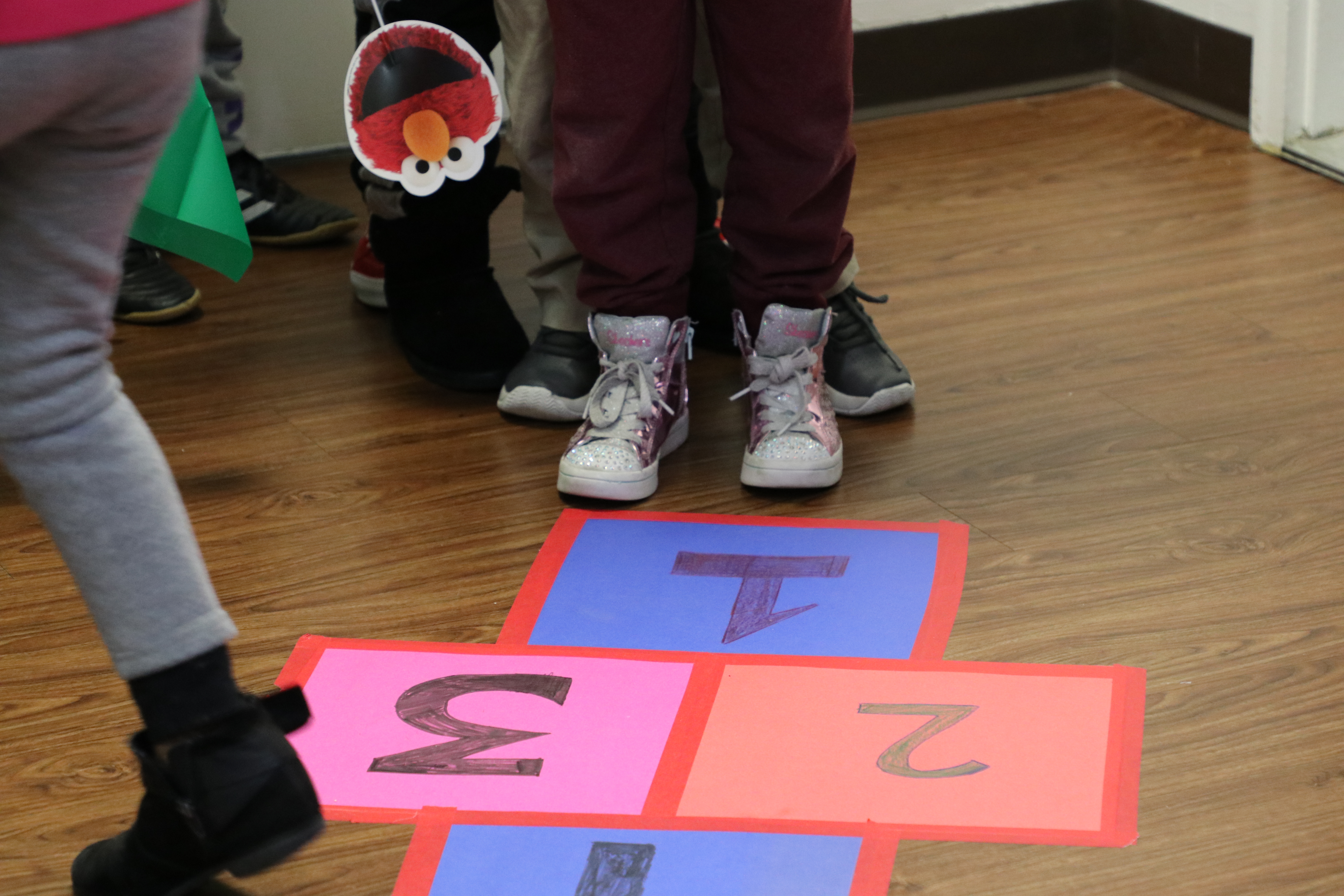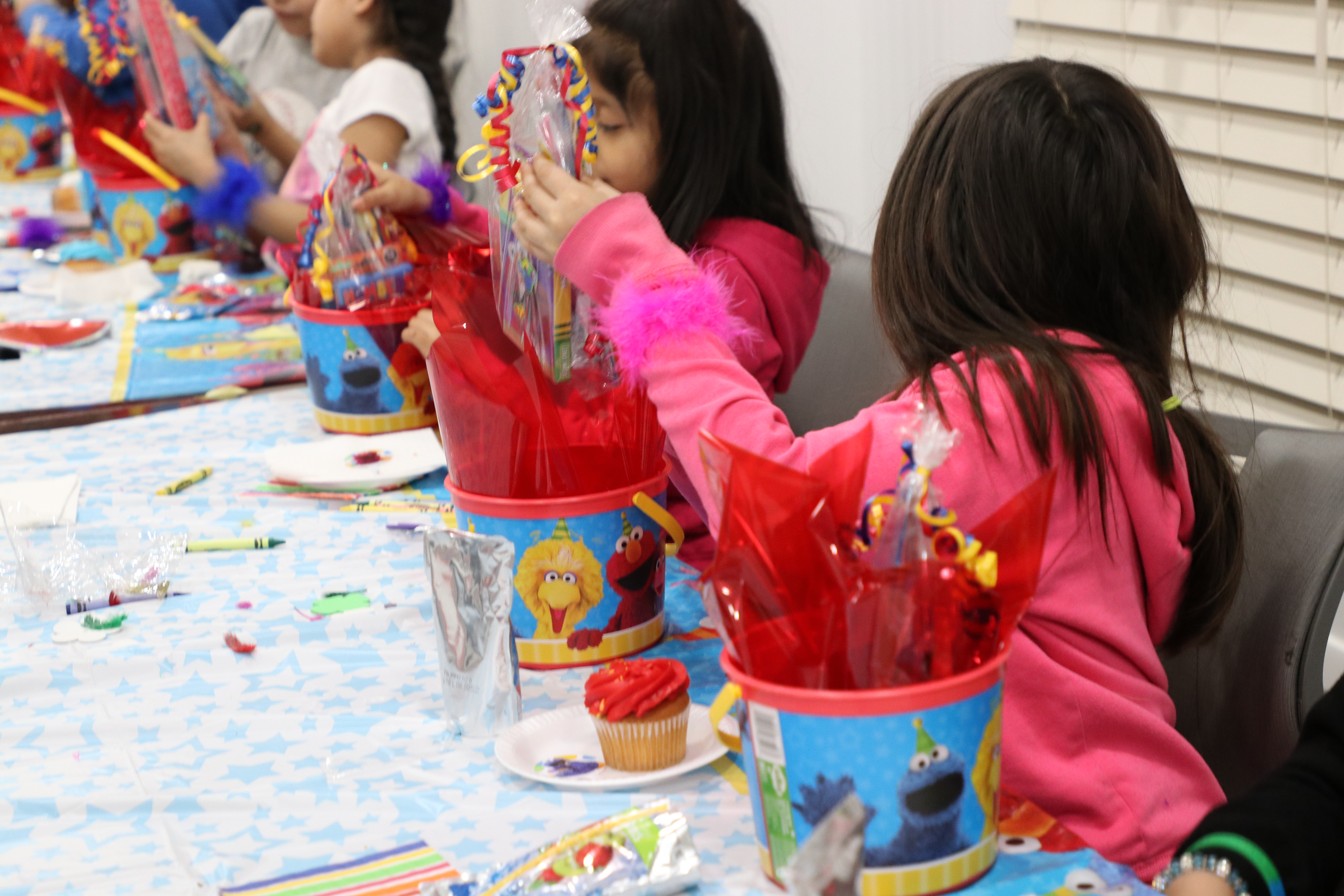At last month’s “F is for Family” workshop, families from Prospect Family Residence and afterschool had the opportunity to engage with the new set of resources developed by Sesame Street in Communities to help explain the experience of homelessness to young children.
“It’s so important for all kids to see their lived experiences represented in their favorite media,” says Kelsey Martinez, LMSW, Senior Client Care Coordinator at Prospect, who helped to plan and facilitate the event. “It can be hard to know how to approach conversations around topics like housing instability with kids, so tools like these are vital in guiding the process for parents and providers.”
Homes for the Homeless and its sister organization the Institute for Children, Poverty, and Homelessness were advisers to Sesame Street in Communities in the development of this initiative, which includes a storybook, videos, activities, and parent workshops. Staff and families from HFH’s Prospect, Saratoga, and Williamsbridge family residences also participated in focus groups providing valuable input on the project.
As part of a volunteer community service project, teens from Prospect’s FutureLink afterschool program created a colorful hopscotch court for the event, which the younger children readily put to use, hopping one by one into a reading circle arranged in the center of the room.
The Prospect team adorned the room itself with a playful and engaging air, covering it with Sesame Street decals, photo props, sweets, streamers and balloons.
Martinez began by introducing the families to Lily, a 7-year-old muppet, whose storyline centers on her family’s experience with homelessness.
Families then watched two videos starring Lily, Elmo, and Sofia, a grown-up friend of Lily’s mom with whom Lily and her family are staying temporarily.
In the first video, Lily becomes disheartened while painting a rainbow mural with her friends, trailing off at the color purple.
“The color purple made her sad because she lost her house and her room was purple,” explained one child in attendance at the Prospect event.
Tarsis Gotay-Ihonor, LMSW, a Client Care Coordinator at Prospect, then showed families a second video, featuring the “ribbons of hope” Lily’s mother carries for Lily to turn into bracelets wherever they are staying.
Families at Prospect watched as Lily offered Elmo one of the bracelets she created from her ribbons, a gesture meant to highlight the ways in which friendship, hope, and solidarity can lead to resilience for families experiencing homelessness or other forms of community stress.
Following the video, Gotay-Ihonor talked with families about how the ribbons became a source of consistency and comfort for Lily, especially when she became frustrated or saddened by her family’s circumstances.
The children were then asked what items made them feel safe in their own lives.
One responded, “my pillow.”
Another said, “my stuffed doggie.”
One child even showed off a bracelet her friend had given her earlier that week, noting that her friend had been comforting her about something she was afraid of.
Much to the delight of attendees, Prospect staff handed out colorful slap bracelets, in lieu of ribbons, to both kids and parents, as a symbol of friendship and community support.
Martinez then read We Got This!, a children’s book developed by Sesame Street in Communities, with Heidy Mendez, Education Program Coordinator at Prospect, providing translation into Spanish for Spanish-speaking children and parents in attendance.
The book features Lily meeting a baby bird whose nest is destroyed, after which his mother receives the help of friends as they rebuild their nest.
“So many children are facing housing instability and homelessness, yet it’s so rare that these experiences are reflected in the media they consume,” reflects Martinez. “Strong, relatable characters like Lily can really make a difference in how kids view themselves.”
Following the reading, Gotay-Ihonor began a dialogue with families about the concept of ‘home,’ and how ‘home’ can be found in family, friendship, and even bracelets.
She asked families what the word home signified for them, to which one child replied, “home is where love is.”
The conversation culminated in a community art project. Families gathered at a long table and were handed paper hearts, which they were then asked to decorate with their definition of home.
Many were eager and talkative throughout the activity, comparing hearts and sharing arts supplies. Others, especially parents for whom the conversations had resonated, took a more contemplative approach.
Both parents and children tended to reference family and love as integral to their definition of home.
One heart read, “I love my mom and my dad.”
Another, “I love my kids! My home is love.”
As they worked on their hearts, parents received a packet containing bilingual resources developed by Sesame Street in Communities for talking with children about the experience of homelessness, a copy of the We Got This! storybook, and a gift bag.
Children received a gift basket containing, among other goodies, a toothbrush to mark National Children’s Dental Health Month.
Upon finishing, families pasted their hearts to a large banner with “Home is…” written along the top. The banner now hangs in a display case at Prospect Family Residence so that other families and staff members can reflect on what home means to them.
On one heart, a parent wrote in Spanish, “Although my house is not a castle, what is important is that we are healthy and happy. Humble, but with love. That is what is the most important.”
Find out more about Sesame Street in Communities’ resources for families experiencing homelessness on the Sesame Street in Communities website.





